
Apple iPhone 16 Pro smartphone review - The small Pro phone with the big display
Small powerhouse.
If you want the best iPhone, then you'll have to reach for the Pro series, as only here will you get a 120 Hz display, the fastest SoC and the best cameras. Exactly this is offered by the iPhone 16 Pro and much more, as by Apple's standards, lots has been changed on the new Pro model. It even features the same camera setup as the iPhone 16 Pro Max.Manuel Masiero, 👁 Florian Schmitt (translated by Daisy Dickson) Published 🇩🇪 🇫🇷 ...
Every year in September, Apple presents its new iPhones. And like every year, it may not have reinvented the wheel, but there is certainly no shortage of innovations.
The Apple iPhone 16 Pro follows this tradition: its SoC is new and even faster, its display has grown to 6.3 inches, WiFi 7 is now available instead of WiFi 6E, and there is a new camera control button in addition to a 5x optical zoom.
Apple hasn't tweaked the price this year. The iPhone 16 Pro starts at exactly the same price as last year. The smallest version with 128 GB of storage costs US$999, and the version of the Pro with 1 TB of storage costs US$1499.
Possible competitors compared
Rating | Version | Date | Model | Weight | Drive | Size | Resolution | Price |
|---|---|---|---|---|---|---|---|---|
| 87.9 % | v8 | 10 / 2024 | Apple iPhone 16 Pro A18 Pro, A18 Pro GPU | 199 g | 128 GB NVMe | 6.30" | 2622x1206 | |
| 90.7 % v7 (old) | v7 (old) | 10 / 2023 | Apple iPhone 15 Pro A17 Pro, A17 Pro GPU | 187 g | 128 GB NVMe | 6.10" | 2556x1179 | |
| 86.3 % | v8 | 10 / 2024 | Apple iPhone 16 Plus A18, A18 GPU | 199 g | 128 GB NVMe | 6.70" | 2796x1290 | |
| 90 % v7 (old) | v7 (old) | 03 / 2024 | Samsung Galaxy S24 Exynos 2400, Xclipse 940 | 167 g | 256 GB UFS 4.0 Flash | 6.20" | 2340x1080 | |
| 89 % v7 (old) | v7 (old) | 09 / 2023 | Sony Xperia 5 V SD 8 Gen 2, Adreno 740 | 182 g | 128 GB UFS 3.1 Flash | 6.10" | 2520x1080 | |
| 89.4 % v7 (old) | v7 (old) | 12 / 2023 | Xiaomi 14 Pro SD 8 Gen 3, Adreno 750 | 223 g | 256 GB UFS 4.0 Flash | 6.73" | 3200x1440 |
Please note: We have updated our rating system and the results of version 8 are not comparable with the results of version 7. More information is available here.
Case - Titanium-aluminum frame and IP68 certification
Visually, the iPhone 16 Pro hardly differs from the iPhone 15 Pro. Still, it has grown by 3 millimeters in length and 0.9 millimeters in width due to its now 6.3-inch display. It has also gained weight, coming in at 199 grams compared to the previous 187 grams. Compared to similarly compact competitors such as the Samsung Galaxy S24, the iPhone 16 Pro feels quite a bit heavier to hold, and it weighs as much as the 6.7-inch iPhone 16 Plus.
The new Pro model suits its slimmer bezels very well and they give it an even more high-quality appearance than its already impressively-built predecessor. The frame continues to be made from a titanium-aluminum alloy and the back of the phone features a matte glass cover with a shiny Apple logo.
The iPhone 16 Pro is IP68-certified against dust and water, meaning you can dive into 6-meter-deep freshwater for up to 30 minutes with the phone. The display protection called Ceramic Shield is used for the front, which is supposedly 50 % more robust than on the iPhone 15 Pro.
While last year the action button found its way into the iPhone Pro models, this year the entire iPhone 16 line-up has been given an additional new button. It is used to control the camera, is located on the right-hand side of the case and works using haptic feedback. At the same time, it also serves as a camera shortcut button, as pressing it takes you directly to the camera app.
The iPhone 16 Pro is a little more reserved when it comes to its available colorways—brighter colors are only available on the iPhone 16. Aside from white and black, the Pro phone also comes in Natural Titanium. Our test device features the fourth and final colorway called Desert Titanium, which is a sleek bronze tone that unfortunately sometimes looks quite pale depending on how the light hits it.
Connectivity - The iPhone 16 Pro starts with 128 GB of storage
The iPhone 16 Pro's pices have stayed the same as with the iPhone 15 Pro. There are again four storage variants, with each one still being given 8 GB RAM:
- 128 GB storage: US$999
- 256 GB storage: US$1099
- 512 GB storage: US$1299
- 1 TB storage: US$1499
So, it turns out that the rumor of there being a 256-GB entry-level model was false. But only 128 GB as the smallest storage variant is no longer completely up-to-date, particularly for a Pro model. Especially because its storage can now be filled even faster than before, as the iPhone 16 Pro can now record 4K videos at up to 120 frames per second.
The same as on the iPhone 15 Pro, its USB-C port is connected via USB 3.2 Gen 2 speed, resulting in a nominal data throughput of 10 GBit/s. Wired input works using the DisplayPort protocol at up to 4K and with HDR support.
In addition to Bluetooth 5.3 and an NFC chip—which is only available in read mode—Apple has also installed a second-generation ultra-wideband chip into its Pro models, which offers higher precision and a greater range than the UWB chip inside the iPhone 15 Pro. The iPhone 16 Pro has inherited support for the Thread smart home wireless standard from its predecessor.
In the US, the Apple iPhone 16 Pro continues to only support eSIMs and no longer comes with a physical SIM card slot. In Europe, on the other hand, the new model can still house one nano SIM card. All versions feature dual-SIM support.
Software - iOS 18 without Apple Intelligence for now
The new iOS 18 runs on the iPhone 16 Pro. Officially, Apple hasn't stated how long its smartphones will be given updates. Experience shows, however, that you can factor in a timeframe of about 5 years. Furthermore, older devices will still receive updates if they are to close critical security gaps.
iOS 18 also includes numerous new AI functions known as Apple Intelligence, which we presented in our review of the iPhone 16 Plus. Apple Intelligence is considered the main feature of iOS 18. Apple also proudly announced at the presentation of the iPhone 16 series that its new iPhones had been specially developed for these AI features.
In practice, little remains of these marketing promises for the time being. The first AI features are set to be launched in October with iOS 18.1. But not in the EU, as Apple Intelligence isn't yet available there due to the data protection provisions of the Digital Markets Act (DMA). Apple intends to make up for this as soon as it has reached an agreement with the European Commission. However, this is not expected to happen before 2025.
Sustainability
According to Apple, the iPhone 16 Pro consists of 25 % recycled materials. The recycling rate for its gold, aluminum and cobalt is even 100 %. The packaging contains no plastics and is made from 100 % wood fibers, which are either also recycled or come from responsibly managed forests. Apple has provided detailed information in this report.
In the past, iPhones were not exactly known for their ease of repair. However, this has now changed significantly, as the current iPhones have a much more modular internal structure and can be opened from both sides. In addition, the repair assistant integrated into iOS helps to avoid software errors after replacing components.
So, experienced users can repair their iPhone themselves. Although they need special tools for this, Apple also provides them alongside detailed repair manuals.
Communication and GNSS - WiFi 7 and lots of mobile frequencies
The iPhone 16 Pro supports the fastest WiFi standard currently available—namely WiFi 7 and 2x2 MIMO—and can therefore also access the 6 GHz band. It supports a maximum data rate of 2400 MBit/s, but is limited to a bandwidth of 160 MHz.
Using our WiFi 6E reference router Asus ROG Rapture AXE11000, the iPhone 16 Pro achieved stable transfer rates at a slightly lower speed level than the predecessor.
The iPhone 16 Pro is a true "world phone". It supports so many frequency bands that it can be used worldwide without any problems. For 5G and 4G connections, it uses 4x4 MIMO, i.e. it transmits and receives on four channels simultaneously. However, as with the iPhone 15 Pro, faster 5G via mmWave is reserved for users in the USA.
| Networking | |
| Apple iPhone 16 Pro | |
| iperf3 receive AXE11000 | |
| iperf3 transmit AXE11000 | |
| iperf3 transmit AXE11000 6GHz | |
| iperf3 receive AXE11000 6GHz | |
| Apple iPhone 15 Pro | |
| iperf3 transmit AXE11000 6GHz | |
| iperf3 receive AXE11000 6GHz | |
| Apple iPhone 16 Plus | |
| iperf3 transmit AXE11000 6GHz | |
| iperf3 receive AXE11000 6GHz | |
| Samsung Galaxy S24 | |
| iperf3 receive AXE11000 | |
| iperf3 transmit AXE11000 | |
| Sony Xperia 5 V | |
| iperf3 receive AXE11000 | |
| iperf3 transmit AXE11000 | |
| Xiaomi 14 Pro | |
| iperf3 receive AXE11000 | |
| iperf3 transmit AXE11000 | |
| iperf3 transmit AXE11000 6GHz | |
| iperf3 receive AXE11000 6GHz | |
| Average of class Smartphone | |
| iperf3 receive AXE11000 | |
| iperf3 transmit AXE11000 | |
| iperf3 transmit AXE11000 6GHz | |
| iperf3 receive AXE11000 6GHz | |
The iPhone 16 Pro supports the satellite navigation services GPS, GLONASS, Galileo, QZSS, BeiDou and NavIC. In our test, it located us outdoors with an accuracy of around 3 meters and maintained this precision even on a short bike ride. Compared to the Garmin Venu 2 fitness smartwatch, the smartphone couldn't always locate us exactly in narrow old town streets, but its accuracy is still easily sufficient for demanding navigation tasks.
Telephone functions and call quality
During our test, the iPhone 16 Pro delivered great call quality. When making calls to mobile and landline networks, we could hear our call partners perfectly and there were no communication problems with the other party either. In hands-free mode, we sounded a little quieter to the other party, but the overall intelligibility remained high.
If no cell phone network or WLAN is available, the iPhone 16 Pro can also be used to make emergency calls via a satellite connection. Rescue services then receive a text message, which can take around 30 seconds even under ideal conditions, i.e a clear view of the sky.
Apple offers its satellite emergency call function free of charge for 2 years after activation of the iPhone. However, as it would be bad PR if the life-saving function was not available in an emergency due to the lack of an active subscription, it will probably remain free of charge permanently.
Cameras - Triple camera with optical 5x telezoom
Quite a few changes have been made to the phone's camera system compared to its predecessor, as Apple has equipped the iPhone 16 Pro with the same cameras that adorn the iPhone 16 Pro Max. The triple camera is supplemented by a LiDAR scanner.
As usual, there is a 48 MP main camera (f/1.78, 24 mm) with optical image stabilization, which takes 24 MP photos as standard. The full 48 MP can be used in HEIF Max and ProRaw Max mode. The main camera also has a 2x telephoto zoom that works at 12 MP.
The main camera is joined by an ultra-wide-angle lens (f/2.2, 13 mm) with a resolution of 48 MP (previously 12 MP). The third lens is the OIS-supported 12 MP telephoto camera, which offered triple optical magnification in last year's model. Now it has an optical 5x zoom (f/2.8, 120 mm). The results are impressive and are still usable even at 25x digital magnification. The zoom factor can be adjusted in steps of 0.1.
The iPhone 16 Pro's main camera takes great photos with a decent dynamic range that show lots of detail and a balanced color depiction. The 48-MP lens masters even difficult photography conditions, creating appealing results no matter how poor the lighting conditions are. Photos taken using the 48-MP ultra-wide-angle camera can't keep up with those of the main camera but if there's enough ambient light, they are exposed well and are quite detailed. Still, you shouldn't enlarge the shots, as they quickly become pixelated.
You can record video on the iPhone 16 Pro in 4K and at up to 120 frames per second. In doing so, you can switch between 1x and 2x zoom. The results are impressive, but so are their file sizes. You'll need to factor in about 800 MB of storage for one minute of recording in 4K at 120fps. If you limit the recording to 4K at 60fps, then you can you can zoom in and out of the image from wide-angle to 15x digital zoom.
Image comparison
Choose a scene and navigate within the first image. One click changes the position on touchscreens. One click on the zoomed-in image opens the original in a new window. The first image shows the scaled photograph of the test device.
Daylight photo 1Daylight photo 2Ultra-wide-angleLow-light photoIn our lab, we took another look at the main camera under full studio lighting and at just 1 lux lighting. In optimal lighting, the iPhone 16 Pro was able to take good photos, but it no longer captured the edges of the test chart sharply. At 1 lux residual light, the test chart still remained completely recognizable.
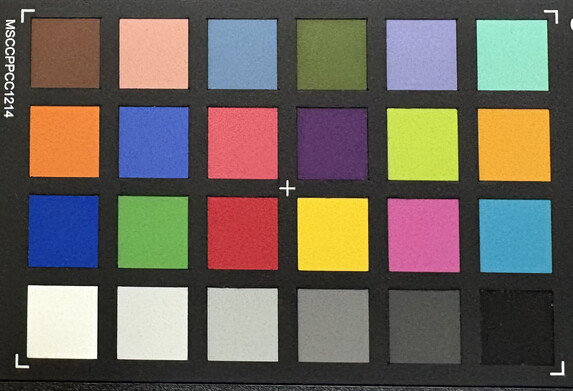

Accessories and warranty - Only a USB 2.0 cable included with the phone
Aside from a USB-C cable, only a SIM tool is included in the flat packaging of our test device alongside a few leaflets and information material. This time, there is no Apple sticker included. If you want to transfer data quickly or mirror the contents of the smartphone display on a monitor, the included USB-C cable is a bit of a waste of time as it only supports USB 2.0.
Apple offers lots of accessories for its smartphone, such as a 30-watt power supply (US$39), a MagSafe charger (US$39) and protective cases with MagSafe functionality (from US$50). If you go for a case from a third-party seller, you'll likely spend less. Torras supplied us with its Ostand 360° Case for this test, which can be used with MagSafe and costs around US$43.
Input devices & operation - New haptic camera button
The iPhone 16 Pro can be operated very smoothly thanks to its 120 Hz panel. As the A18 Pro SoC delivers a surplus in performance, we didn't encounter any stutters or delays during our test, even with lots of apps open at the same time.
FaceID can be used to unlock the phone biometrically; it uses 3D facial recognition which ensures a high level of security and works super quickly and smoothly. In Apple's current portfolio, fingerprint sensors are only installed in the iPhone SE (2022).
The action button, which could already be seen on the iPhone 15 Pro, works as a mute button as standard, but it can also be used to recognize music using Shazam, open the camera app or activate the flashlight, among other things.
The iPhone 16 Pro's haptic camera button is a further new feature. If the phone is locked, then you can launch the camera app by double-tapping the button. If it's unlocked, you only have to tap it once. When the camera app is open, it acts as a shutter release button.
At the same time, the camera button acts as a mini touchpad. If you press its surface lightly until you feel a subtle vibration, then you can subsequently swipe along its touch-sensitive surface to adjust the zoom factor. A light double press calls up a menu that provides access to further camera settings such as exposure time, aperture and tone value.
Operating the camera using this new button takes a bit of practice but once you are accustomed to it, it works quite well. The extent to which it makes sense, especially as all recording parameters can also be set directly via the camera app itself, is another question.
Display - The OLED panel has grown to 6.3 inches
The screen on this year's Pro model has grown quite a bit, as its slimmer bezels result in an increase from 6.1 inches to 6.3 inches. At 2622 x 1206 pixels, the OLED panel has a minimally higher resolution than that of the predecessor model, but its pixel density remains practically unchanged, ensuring a very sharp depiction. The display can adjust its refresh rate dynamically between 1 and 120 Hz, which feels super smooth when scrolling and saves energy when viewing static content.
When depicting a pure white background, the OLED panel can reach brightness levels up to 1095 cd/m², which is slightly above the manufacturer's stated maximum typical brightness. When showing smaller excerpts (APL18 measurement), the display gets even brighter. In this case, the OLED panel can manage up to 1548 cd/m² in HDR mode, which is close to Apple's stated 1600 nits.
At minimum brightness, the OLED panel flickers at 239 Hz, which is likely due to PWM. Thankfully, the flickering is quite even and, as a result, shouldn't be an issue for sensitive users. If you have any doubts, you can always try out the phone in-store before purchasing it.
| |||||||||||||||||||||||||
Brightness Distribution: 98 %
Center on Battery: 1034 cd/m²
Contrast: ∞:1 (Black: 0 cd/m²)
ΔE ColorChecker Calman: 0.98 | ∀{0.5-29.43 Ø4.78}
ΔE Greyscale Calman: 1.6 | ∀{0.09-98 Ø5}
99.9% sRGB (Calman 2D)
Gamma: 2.17
CCT: 6638 K
| Apple iPhone 16 Pro Super Retina XDR OLED, 2622x1206, 6.3" | Apple iPhone 15 Pro Super Retina XDR OLED, 2556x1179, 6.1" | Apple iPhone 16 Plus Super Retina XDR OLED, 2796x1290, 6.7" | Samsung Galaxy S24 Dynamic AMOLED 2X, 2340x1080, 6.2" | Sony Xperia 5 V OLED, 2520x1080, 6.1" | Xiaomi 14 Pro AMOLED, 3200x1440, 6.7" | |
|---|---|---|---|---|---|---|
| Screen | 11% | 3% | -51% | -16% | -10% | |
| Brightness middle (cd/m²) | 1034 | 1092 6% | 1024 -1% | 1349 30% | 889 -14% | 1025 -1% |
| Brightness (cd/m²) | 1034 | 1086 5% | 1019 -1% | 1369 32% | 898 -13% | 1046 1% |
| Brightness Distribution (%) | 98 | 99 1% | 98 0% | 97 -1% | 97 -1% | 95 -3% |
| Black Level * (cd/m²) | ||||||
| Colorchecker dE 2000 * | 0.98 | 0.91 7% | 1.05 -7% | 3.3 -237% | 1.4 -43% | 1.1 -12% |
| Colorchecker dE 2000 max. * | 2.76 | 1.95 29% | 1.81 34% | 5 -81% | 4.5 -63% | 2.9 -5% |
| Greyscale dE 2000 * | 1.6 | 1.3 19% | 1.7 -6% | 2.4 -50% | 1 37% | 2.2 -38% |
| Gamma | 2.17 101% | 2.215 99% | 2.332 94% | 1.97 112% | 2.23 99% | 2.25 98% |
| CCT | 6638 98% | 6481 100% | 6412 101% | 6635 98% | 6456 101% | 6622 98% |
* ... smaller is better
Screen Flickering / PWM (Pulse-Width Modulation)
| Screen flickering / PWM detected | 239 Hz Amplitude: 15 % | ||
The display backlight flickers at 239 Hz (worst case, e.g., utilizing PWM) . The frequency of 239 Hz is relatively low, so sensitive users will likely notice flickering and experience eyestrain at the stated brightness setting and below. In comparison: 53 % of all tested devices do not use PWM to dim the display. If PWM was detected, an average of 8091 (minimum: 5 - maximum: 343500) Hz was measured. | |||
Measurement series with fixed zoom level and different brightness settings
In terms of color depiction, the OLED panel delivers top results that easily let the phone be used professionally with the right settings selected. To do so, you should deactivate True Tone, which adjusts the colors automatically to the ambient light, thus displaying them slightly distorted.
Display Response Times
| ↔ Response Time Black to White | ||
|---|---|---|
| 1.1 ms ... rise ↗ and fall ↘ combined | ↗ 0.5 ms rise | |
| ↘ 0.6 ms fall | ||
| The screen shows very fast response rates in our tests and should be very well suited for fast-paced gaming. In comparison, all tested devices range from 0.1 (minimum) to 240 (maximum) ms. » 4 % of all devices are better. This means that the measured response time is better than the average of all tested devices (20.2 ms). | ||
| ↔ Response Time 50% Grey to 80% Grey | ||
| 1.4 ms ... rise ↗ and fall ↘ combined | ↗ 0.7 ms rise | |
| ↘ 0.7 ms fall | ||
| The screen shows very fast response rates in our tests and should be very well suited for fast-paced gaming. In comparison, all tested devices range from 0.165 (minimum) to 636 (maximum) ms. » 5 % of all devices are better. This means that the measured response time is better than the average of all tested devices (31.6 ms). | ||
Performance - The iPhone 16 Pro with an Apple A18 Pro
The Apple A18 Pro gets to work inside the iPhone 16 Pro which, compared to the A17 Pro, supposedly offers even more performance. Apple speaks of 15 % higher CPU performance and 20 % higher graphics performance. Furthermore, the A18 Pro is said to perform Apple Intelligence functions up to 15 % faster. To do so, Apple has increased the clock rates of its 6-core CPU to 4.04 GHz (A17 Pro: 3.78 GHz) and relies on an advanced 3-nm manufacturing process at TSMC.
In the CPU benchmarks, the A18 Pro came out on top almost throughout, at times leaving the A17 Pro far behind—although it didn't always deliver the promised 15 % performance increase. During AnTuTu v10, only the Xiaomi 14 Pro with its Snapdragon 8 Gen 3 managed to scrape out a few more points.
| Geekbench AI | |
| Single Precision TensorFlow NNAPI 1.1 | |
| Apple iPhone 16 Plus | |
| Average of class Smartphone (122 - 4122, n=39, last 2 years) | |
| Samsung Galaxy S24 | |
| Half Precision TensorFlow NNAPI 1.1 | |
| Apple iPhone 16 Plus | |
| Average of class Smartphone (122 - 32120, n=39, last 2 years) | |
| Samsung Galaxy S24 | |
| Quantized TensorFlow NNAPI 1.1 | |
| Apple iPhone 16 Plus | |
| Average of class Smartphone (118 - 44381, n=39, last 2 years) | |
| Samsung Galaxy S24 | |
As the GPU tests showed, the A18 Pro's 6-core GPU doesn't give the A17 Pro's graphics chip a chance. The difference was particularly large in GFXBench, but it wasn't quite enough to beat the Android competition. The Xiaomi 14 Pro was even faster in the GFXBench test, while the Samsung Galaxy S24 came close to the performance of the iPhone 16 Pro. During the on-screen tests, our test candidate was slowed down to 60fps, just like the iPhone 15 Pro. In 3DMark, the new Pro model was consistently at the top.
GFXBench (DX / GLBenchmark) 2.7: T-Rex Onscreen | 1920x1080 T-Rex Offscreen
GFXBench 3.0: on screen Manhattan Onscreen OGL | 1920x1080 1080p Manhattan Offscreen
GFXBench 3.1: on screen Manhattan ES 3.1 Onscreen | 1920x1080 Manhattan ES 3.1 Offscreen
GFXBench: on screen Car Chase Onscreen | 1920x1080 Car Chase Offscreen | on screen Aztec Ruins High Tier Onscreen | 2560x1440 Aztec Ruins High Tier Offscreen | on screen Aztec Ruins Normal Tier Onscreen | 1920x1080 Aztec Ruins Normal Tier Offscreen | 3840x2160 4K Aztec Ruins High Tier Offscreen
| 3DMark / Wild Life Extreme Unlimited | |
| Apple iPhone 16 Pro | |
| Samsung Galaxy S24 | |
| Apple iPhone 15 Pro | |
| Sony Xperia 5 V | |
| Apple iPhone 16 Plus | |
| 3DMark / Wild Life Extreme | |
| Apple iPhone 16 Pro | |
| Apple iPhone 15 Pro | |
| Samsung Galaxy S24 | |
| Apple iPhone 16 Plus | |
| Sony Xperia 5 V | |
| 3DMark / Solar Bay Score | |
| Apple iPhone 16 Pro | |
| Apple iPhone 15 Pro | |
| Samsung Galaxy S24 | |
| Apple iPhone 16 Plus | |
| 3DMark / Solar Bay Unlimited Score | |
| Apple iPhone 16 Pro | |
| Apple iPhone 16 Plus | |
| Samsung Galaxy S24 | |
| Apple iPhone 15 Pro | |
| 3DMark / Steel Nomad Light Unlimited Score | |
| Apple iPhone 16 Pro | |
| Apple iPhone 16 Plus | |
| 3DMark / Steel Nomad Light Score | |
| Apple iPhone 16 Pro | |
| Apple iPhone 16 Plus | |
| GFXBench (DX / GLBenchmark) 2.7 / T-Rex Onscreen | |
| Sony Xperia 5 V | |
| Xiaomi 14 Pro | |
| Samsung Galaxy S24 | |
| Apple iPhone 15 Pro | |
| Apple iPhone 16 Plus | |
| Apple iPhone 16 Pro | |
| GFXBench (DX / GLBenchmark) 2.7 / T-Rex Offscreen | |
| Xiaomi 14 Pro | |
| Apple iPhone 16 Pro | |
| Sony Xperia 5 V | |
| Samsung Galaxy S24 | |
| Apple iPhone 16 Plus | |
| Apple iPhone 15 Pro | |
| GFXBench 3.0 / Manhattan Onscreen OGL | |
| Sony Xperia 5 V | |
| Xiaomi 14 Pro | |
| Samsung Galaxy S24 | |
| Apple iPhone 15 Pro | |
| Apple iPhone 16 Plus | |
| Apple iPhone 16 Pro | |
| GFXBench 3.0 / 1080p Manhattan Offscreen | |
| Xiaomi 14 Pro | |
| Sony Xperia 5 V | |
| Apple iPhone 16 Pro | |
| Samsung Galaxy S24 | |
| Apple iPhone 16 Plus | |
| Apple iPhone 15 Pro | |
| GFXBench 3.1 / Manhattan ES 3.1 Onscreen | |
| Sony Xperia 5 V | |
| Xiaomi 14 Pro | |
| Samsung Galaxy S24 | |
| Apple iPhone 16 Plus | |
| Apple iPhone 15 Pro | |
| Apple iPhone 16 Pro | |
| GFXBench 3.1 / Manhattan ES 3.1 Offscreen | |
| Xiaomi 14 Pro | |
| Apple iPhone 16 Pro | |
| Samsung Galaxy S24 | |
| Sony Xperia 5 V | |
| Apple iPhone 16 Plus | |
| Apple iPhone 15 Pro | |
| GFXBench / Car Chase Onscreen | |
| Samsung Galaxy S24 | |
| Sony Xperia 5 V | |
| Xiaomi 14 Pro | |
| Apple iPhone 15 Pro | |
| Apple iPhone 16 Pro | |
| Apple iPhone 16 Plus | |
| GFXBench / Car Chase Offscreen | |
| Xiaomi 14 Pro | |
| Apple iPhone 16 Pro | |
| Samsung Galaxy S24 | |
| Sony Xperia 5 V | |
| Apple iPhone 15 Pro | |
| Apple iPhone 16 Plus | |
| GFXBench / Aztec Ruins High Tier Onscreen | |
| Samsung Galaxy S24 | |
| Sony Xperia 5 V | |
| Xiaomi 14 Pro | |
| Apple iPhone 15 Pro | |
| Apple iPhone 16 Pro | |
| Apple iPhone 16 Plus | |
| GFXBench / Aztec Ruins High Tier Offscreen | |
| Xiaomi 14 Pro | |
| Apple iPhone 16 Pro | |
| Samsung Galaxy S24 | |
| Sony Xperia 5 V | |
| Apple iPhone 15 Pro | |
| Apple iPhone 16 Plus | |
| GFXBench / Aztec Ruins Normal Tier Onscreen | |
| Sony Xperia 5 V | |
| Samsung Galaxy S24 | |
| Xiaomi 14 Pro | |
| Apple iPhone 15 Pro | |
| Apple iPhone 16 Plus | |
| Apple iPhone 16 Pro | |
| GFXBench / Aztec Ruins Normal Tier Offscreen | |
| Xiaomi 14 Pro | |
| Apple iPhone 16 Pro | |
| Samsung Galaxy S24 | |
| Apple iPhone 16 Plus | |
| Sony Xperia 5 V | |
| Apple iPhone 15 Pro | |
| GFXBench / 4K Aztec Ruins High Tier Offscreen | |
| Xiaomi 14 Pro | |
| Samsung Galaxy S24 | |
| Sony Xperia 5 V | |
| Apple iPhone 16 Pro | |
| Apple iPhone 16 Plus | |
| Apple iPhone 15 Pro | |
Surfing the web is a showcase discipline for the iPhone 16 Pro, as websites are opened very quickly and can be scrolled through swiftly. The Apple smartphone set new records in the browser tests.
| Jetstream 2 - 2.0 Total Score | |
| Apple iPhone 16 Pro (Safari 18) | |
| Average Apple A18 Pro (354 - 387, n=2) | |
| Apple iPhone 15 Pro (Chrome 117) | |
| Apple iPhone 16 Plus (Safari 18) | |
| Sony Xperia 5 V (Chrome 117.0.5938.60) | |
| Xiaomi 14 Pro (Chrome 120) | |
| Average of class Smartphone (23.8 - 387, n=148, last 2 years) | |
| Samsung Galaxy S24 (Chrome 122) | |
| Speedometer 2.0 - Result 2.0 | |
| Apple iPhone 16 Pro (Safari 18) | |
| Average Apple A18 Pro (557 - 569, n=2) | |
| Apple iPhone 15 Pro (Chrome 117) | |
| Samsung Galaxy S24 (Chrome 122) | |
| Average of class Smartphone (15.2 - 643, n=121, last 2 years) | |
| Sony Xperia 5 V (Chrome 117.0.5938.60) | |
| Xiaomi 14 Pro (Chrome 120) | |
| Speedometer 3 - Score 3.0 | |
| Apple iPhone 16 Pro (Safari 18) | |
| Average Apple A18 Pro (33.5 - 33.5, n=2) | |
| Apple iPhone 16 Plus (Safari 18) | |
| Average of class Smartphone (1.03 - 42.8, n=124, last 2 years) | |
| WebXPRT 4 - Overall | |
| Average Apple A18 Pro (267 - 271, n=2) | |
| Apple iPhone 16 Pro (Safari 18) | |
| Apple iPhone 16 Plus (Safari 18) | |
| Xiaomi 14 Pro (Chrome 120) | |
| Samsung Galaxy S24 (Chrome 122) | |
| Sony Xperia 5 V (Chrome 117.0.5938.60) | |
| Average of class Smartphone (27 - 306, n=144, last 2 years) | |
| Octane V2 - Total Score | |
| Average Apple A18 Pro (98997 - 100368, n=2) | |
| Apple iPhone 16 Pro (Safari 18) | |
| Apple iPhone 16 Plus (Safari 18) | |
| Apple iPhone 15 Pro (Chrome 117) | |
| Samsung Galaxy S24 (Chrome 122) | |
| Sony Xperia 5 V (Chrome 117.0.5938.60) | |
| Xiaomi 14 Pro (Chrome 120) | |
| Average of class Smartphone (2228 - 121337, n=195, last 2 years) | |
| Mozilla Kraken 1.1 - Total | |
| Average of class Smartphone (257 - 28190, n=154, last 2 years) | |
| Xiaomi 14 Pro (Chrome 120) | |
| Sony Xperia 5 V (Chrome 117.0.5938.60) | |
| Samsung Galaxy S24 (Chrome 122) | |
| Apple iPhone 15 Pro (Chrome 117) | |
| Apple iPhone 16 Plus (Safari 18) | |
| Average Apple A18 Pro (277 - 279, n=2) | |
| Apple iPhone 16 Pro (Safari 18) | |
* ... smaller is better
Subjectively, the iPhone 16 Pro proves to be a fast-reacting phone during everyday use, and even large apps are downloaded in no time. Objectively, we unfortunately can't assess the performance of Apple's NVMe flash, as there are no reliable storage benchmarks for iOS.
Games - Powerful gaming platform
The iPhone 16 Pro offers plenty of power for AAA games thanks to its hardware-accelerated ray tracing and AI functions. Prestigious games such as Assassin's Creed Mirage or Resident Evil 4 should already run smoothly on the iPhone 16 models—perhaps not quite as fast, but you certainly don't necessarily need the Pro model for gaming.
We have nothing to complain about the iPhone 16 Pro's gaming performance. Even demanding games such as Genshin Impact run smoothly at all times in the highest graphics settings. At the lowest detail level, the game supports up to 120fps, just like PUBG Mobile.
Emissions - Significant throttling under load
Temperature
In our test, the iPhone 16 Pro heated up to 45.9 °C, but only after it had been subjected to the Linpack stress test for an hour. During normal operation, however, it stays nice and cool.
In the 3DMark stress tests, the smartphone's performance dropped by more than a third in some cases. However, in view of its enormous performance reserves, this should hardly be noticeable during everyday use.
(±) The maximum temperature on the upper side is 44.2 °C / 112 F, compared to the average of 35.2 °C / 95 F, ranging from 21.9 to 247 °C for the class Smartphone.
(-) The bottom heats up to a maximum of 45.9 °C / 115 F, compared to the average of 34 °C / 93 F
(+) In idle usage, the average temperature for the upper side is 26.8 °C / 80 F, compared to the device average of 32.9 °C / 91 F.
3DMark Steel Nomad Stress Test
| 3DMark | |
| Wild Life Stress Test Stability | |
| Apple iPhone 16 Plus | |
| Apple iPhone 16 Pro | |
| Apple iPhone 15 Pro | |
| Samsung Galaxy S24 | |
| Sony Xperia 5 V | |
| Wild Life Extreme Stress Test | |
| Apple iPhone 15 Pro | |
| Apple iPhone 16 Plus | |
| Apple iPhone 16 Pro | |
| Samsung Galaxy S24 | |
| Sony Xperia 5 V | |
| Solar Bay Stress Test Stability | |
| Apple iPhone 15 Pro | |
| Apple iPhone 16 Plus | |
| Apple iPhone 16 Pro | |
| Samsung Galaxy S24 | |
| Steel Nomad Light Stress Test Stability | |
| Apple iPhone 16 Plus | |
| Apple iPhone 16 Pro | |
Speakers
The stereo speakers don't produce an overly powerful sound, but they convey voices in particular very well and sound relatively balanced overall. The speakers don't distort at high volumes, but they do then sound a little tinny.
External audio devices can be connected to the smartphone via USB-C or Bluetooth 5.3. For wireless audio transmission, the iPhone 16 Pro only supports Apple AAC and therefore not a single high-res certified BT codec.
Apple iPhone 16 Pro audio analysis
(±) | speaker loudness is average but good (79.6 dB)
Bass 100 - 315 Hz
(±) | reduced bass - on average 10.4% lower than median
(±) | linearity of bass is average (12.7% delta to prev. frequency)
Mids 400 - 2000 Hz
(+) | balanced mids - only 3.4% away from median
(+) | mids are linear (4.9% delta to prev. frequency)
Highs 2 - 16 kHz
(±) | higher highs - on average 7.7% higher than median
(±) | linearity of highs is average (8.7% delta to prev. frequency)
Overall 100 - 16.000 Hz
(±) | linearity of overall sound is average (18.3% difference to median)
Compared to same class
» 18% of all tested devices in this class were better, 9% similar, 73% worse
» The best had a delta of 11%, average was 35%, worst was 134%
Compared to all devices tested
» 39% of all tested devices were better, 8% similar, 53% worse
» The best had a delta of 4%, average was 24%, worst was 134%
Samsung Galaxy S24 audio analysis
(+) | speakers can play relatively loud (91.4 dB)
Bass 100 - 315 Hz
(-) | nearly no bass - on average 22.1% lower than median
(+) | bass is linear (6.2% delta to prev. frequency)
Mids 400 - 2000 Hz
(±) | reduced mids - on average 5.3% lower than median
(+) | mids are linear (5% delta to prev. frequency)
Highs 2 - 16 kHz
(±) | higher highs - on average 5.3% higher than median
(+) | highs are linear (3.1% delta to prev. frequency)
Overall 100 - 16.000 Hz
(±) | linearity of overall sound is average (16.1% difference to median)
Compared to same class
» 5% of all tested devices in this class were better, 4% similar, 90% worse
» The best had a delta of 11%, average was 35%, worst was 134%
Compared to all devices tested
» 25% of all tested devices were better, 5% similar, 70% worse
» The best had a delta of 4%, average was 24%, worst was 134%
Battery life - The iPhone 16 Pro with a much larger battery
Power consumption
Under full load, the iPhone 16 Pro drains its battery considerably and during our test, it required up to 14.4 watts. At the same time, it can also run frugally in idle mode and, with an average of 0.6 watts, it beat all other comparison devices in terms of energy efficiency, alongside the iPhone 15 Pro.
The new Pro model has slightly increased its charging speed from 20 to 25 watts. In our test, it took 55 minutes for the empty battery to return to 80 % capacity. A full charge takes 1:45 hours.
The smartphone can also be charged at 25 watts via MagSafe. Wireless charging via Qi works at up to 7.5 watts.
| Off / Standby | |
| Idle | |
| Load |
|
Key:
min: | |
| Apple iPhone 16 Pro 3582 mAh | Apple iPhone 15 Pro 3274 mAh | Apple iPhone 16 Plus 4674 mAh | Samsung Galaxy S24 4000 mAh | Sony Xperia 5 V 5000 mAh | Xiaomi 14 Pro 4880 mAh | Average Apple A18 Pro | Average of class Smartphone | |
|---|---|---|---|---|---|---|---|---|
| Power Consumption | -12% | -33% | -24% | -25% | -31% | -14% | -51% | |
| Idle Minimum * (Watt) | 0.4 | 0.7 -75% | 0.8 -100% | 0.42 -5% | 0.79 -98% | 0.89 -123% | 0.41 ? -3% | 0.845 ? -111% |
| Idle Average * (Watt) | 0.6 | 0.9 -50% | 1 -67% | 0.93 -55% | 1.08 -80% | 1.05 -75% | 1.075 ? -79% | 1.44 ? -140% |
| Idle Maximum * (Watt) | 1 | 1.1 -10% | 1.2 -20% | 1.07 -7% | 1.12 -12% | 1.11 -11% | 1.29 ? -29% | 1.625 ? -63% |
| Load Average * (Watt) | 11 | 6 45% | 9.5 14% | 15.43 -40% | 7.93 28% | 9.03 18% | 7.21 ? 34% | 7.01 ? 36% |
| Load Maximum * (Watt) | 14.4 | 10.1 30% | 13.6 6% | 16.51 -15% | 8.78 39% | 9.06 37% | 13.1 ? 9% | 11.3 ? 22% |
* ... smaller is better
Power consumption: Geekbench (150 cd/m²)
Power consumption: GFXBench (150 cd/m²)
Runtimes
The iPhone 16 Pro makes the biggest leap forward in the new iPhone lineup when it comes to its battery. Its capacity has increased from 3274 to 3582 mAh, which corresponds to an increase of 9 %.
This larger battery was also noticeable during our test, as the iPhone 16 Pro ran for around 1.5 hours longer than the iPhone 15 Pro during simulated web surfing. When playing videos in a continuous loop, it still delivered an advantage of around 1 hour. All in all, the iPhone 16 Pro has enough power to get demanding users through the whole day.
| Apple iPhone 16 Pro 3582 mAh | Apple iPhone 15 Pro 3274 mAh | Apple iPhone 16 Plus 4674 mAh | Samsung Galaxy S24 4000 mAh | Sony Xperia 5 V 5000 mAh | Xiaomi 14 Pro 4880 mAh | |
|---|---|---|---|---|---|---|
| Battery runtime | 8% | 16% | -21% | 12% | -17% | |
| Reader / Idle (h) | 55.3 | 45.2 -18% | 44.5 -20% | 40 -28% | 46.5 -16% | 33.3 -40% |
| H.264 (h) | 26.4 | 25.4 -4% | 27.6 5% | 20.5 -22% | 24.9 -6% | 24 -9% |
| WiFi v1.3 (h) | 16.4 | 13.9 -15% | 19.1 16% | 14.7 -10% | 15.9 -3% | 15 -9% |
| Load (h) | 3.6 | 6 67% | 5.9 64% | 2.7 -25% | 6.2 72% | 3.2 -11% |
Pros
Cons
Verdict on the Apple iPhone 16 Pro
Apple has given its iPhone 16 Pro a powerful upgrade. One of its biggest advancements can be seen as soon as you switch on the phone, as its previously 6.1-inch OLED display has grown to 6.3 inches thanks to its considerably slimmer bezels—without the smartphone's physical dimensions having changed much at all. The new camera button also stands out immediately.
Further improvements: The A18 Pro is even faster than last year's SoC and it includes dedicated AI computing units, plus, a larger battery secures the iPhone 16 Pro even longer runtimes. Moreover, thanks to the addition of a 5x telephoto lens, its camera setup is even the same as that of the iPhone 16 Pro Max.
The Apple iPhone 16 Pro is one of the best compact smartphones, many aspects of which show further great improvements over its predecessor.
Apple has put together a very good overall package when it comes to the new iPhone 16 Pro, while it is also one of the best compact smartphones on the market in general. As expected, its entry-level price of US$999 is correspondingly high.
Compared to its predecessor, the improvements that have been made are only incremental—a little better here, a little more there. However, it may still be worth the upgrade for iPhone 15 Pro users, especially if photography is your main focus, as the iPhone 16 Pro's 5x zoom camera speaks in its favor.
It seems we will have to wait a little longer for a "killer feature" in the new iPhones. Apple isn't set to release its widely announced AI features until later this year in the United States.
Alternatives to the Apple iPhone 16 Pro include the Samsung Galaxy S24 and the Sony Xperia 5 V. Both cost a lot less, while still being similarly compact but not quite as powerful. However, they each have a 120 Hz display.
Price and availability
You can buy the new iPhone 16 Pro directly from Apple, with prices starting from US$999.
The smartphone is also available to purchase via other online retailers such as Amazon.
Please note: We have updated our rating system and the results of version 8 are not comparable with the results of version 7. More information is available here.
Apple iPhone 16 Pro
- 11/11/2024 v8
Manuel Masiero
Transparency
The selection of devices to be reviewed is made by our editorial team. The test sample was freely purchased by the author at his/her own expense. The lender had no influence on this review, nor did the manufacturer receive a copy of this review before publication. There was no obligation to publish this review. As an independent media company, Notebookcheck is not subjected to the authority of manufacturers, retailers or publishers.
This is how Notebookcheck is testing
Every year, Notebookcheck independently reviews hundreds of laptops and smartphones using standardized procedures to ensure that all results are comparable. We have continuously developed our test methods for around 20 years and set industry standards in the process. In our test labs, high-quality measuring equipment is utilized by experienced technicians and editors. These tests involve a multi-stage validation process. Our complex rating system is based on hundreds of well-founded measurements and benchmarks, which maintains objectivity. Further information on our test methods can be found here.




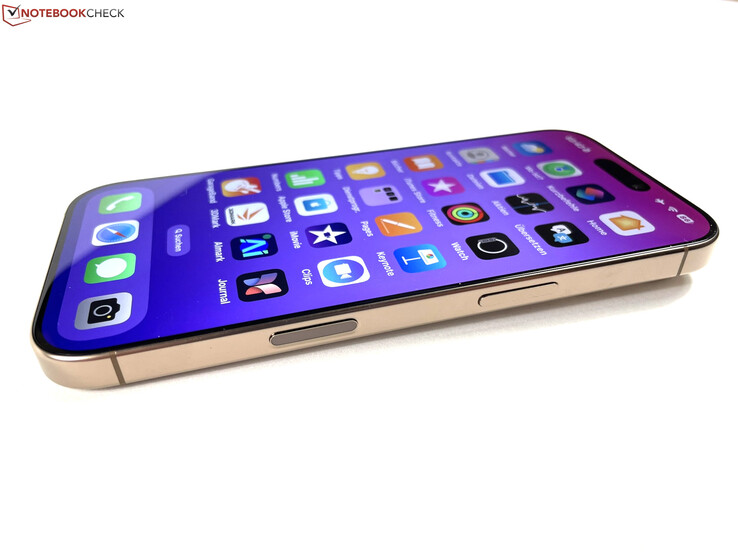




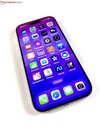
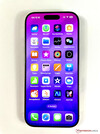
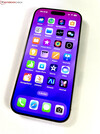
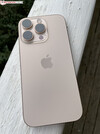




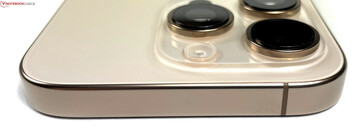

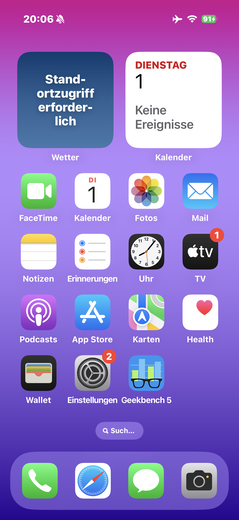
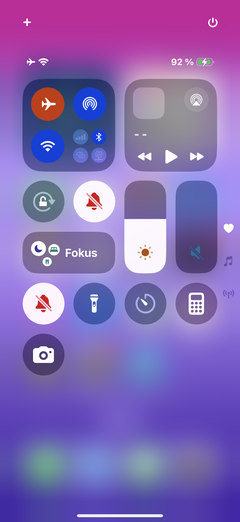
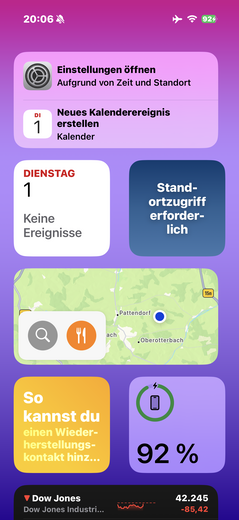
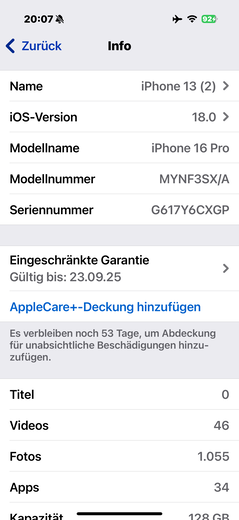
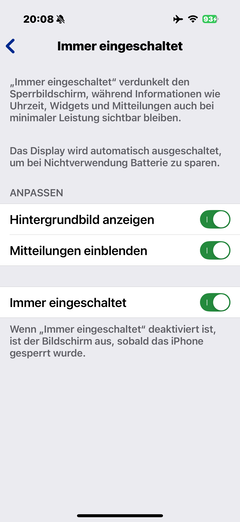
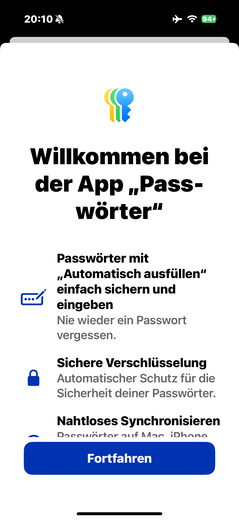
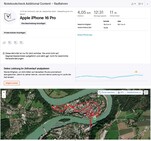
















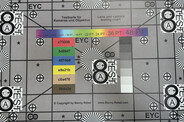

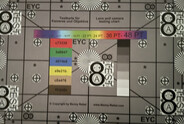

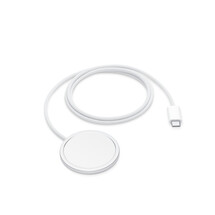
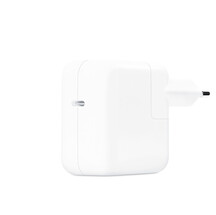
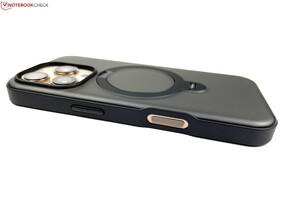
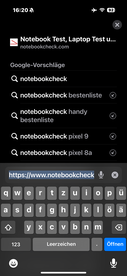
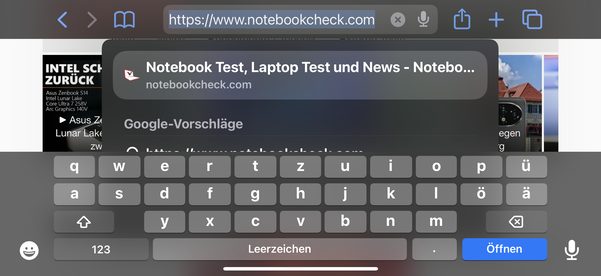
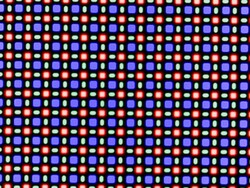
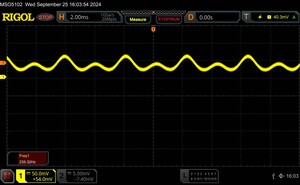





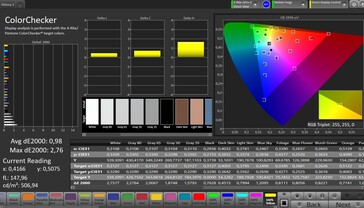
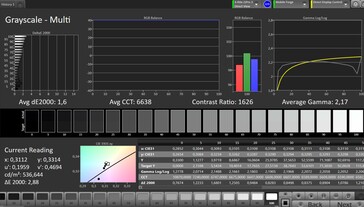

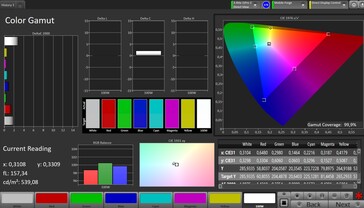
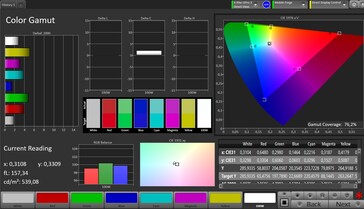
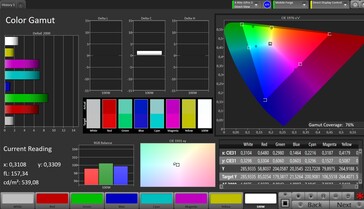

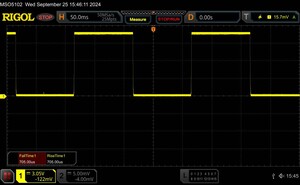
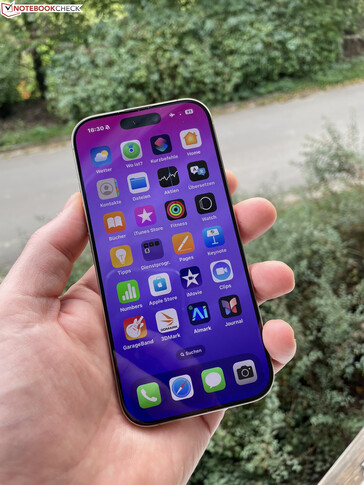
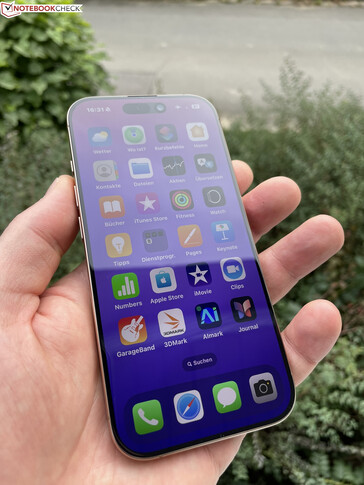


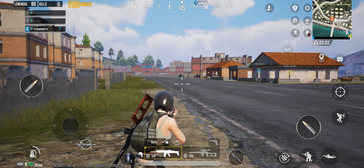
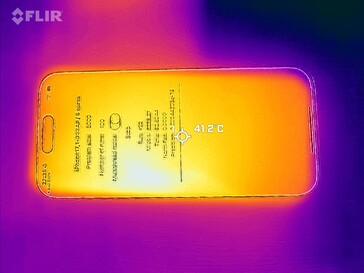
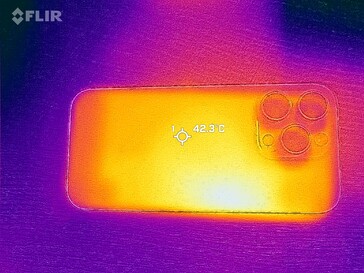
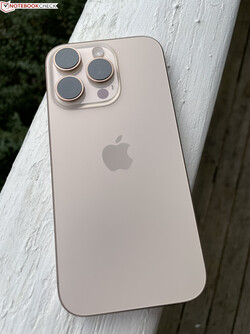
 Total Sustainability Score:
Total Sustainability Score: 



